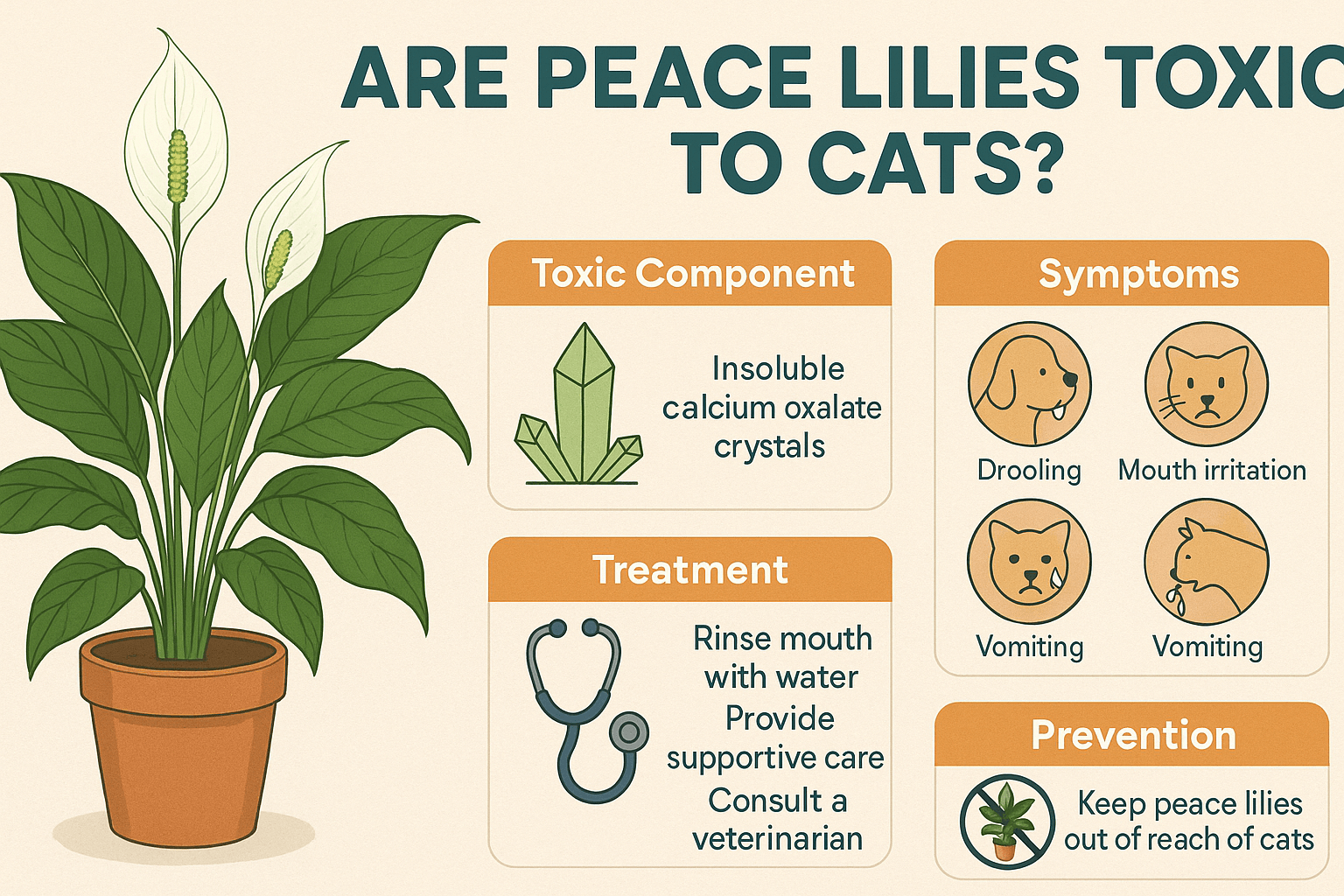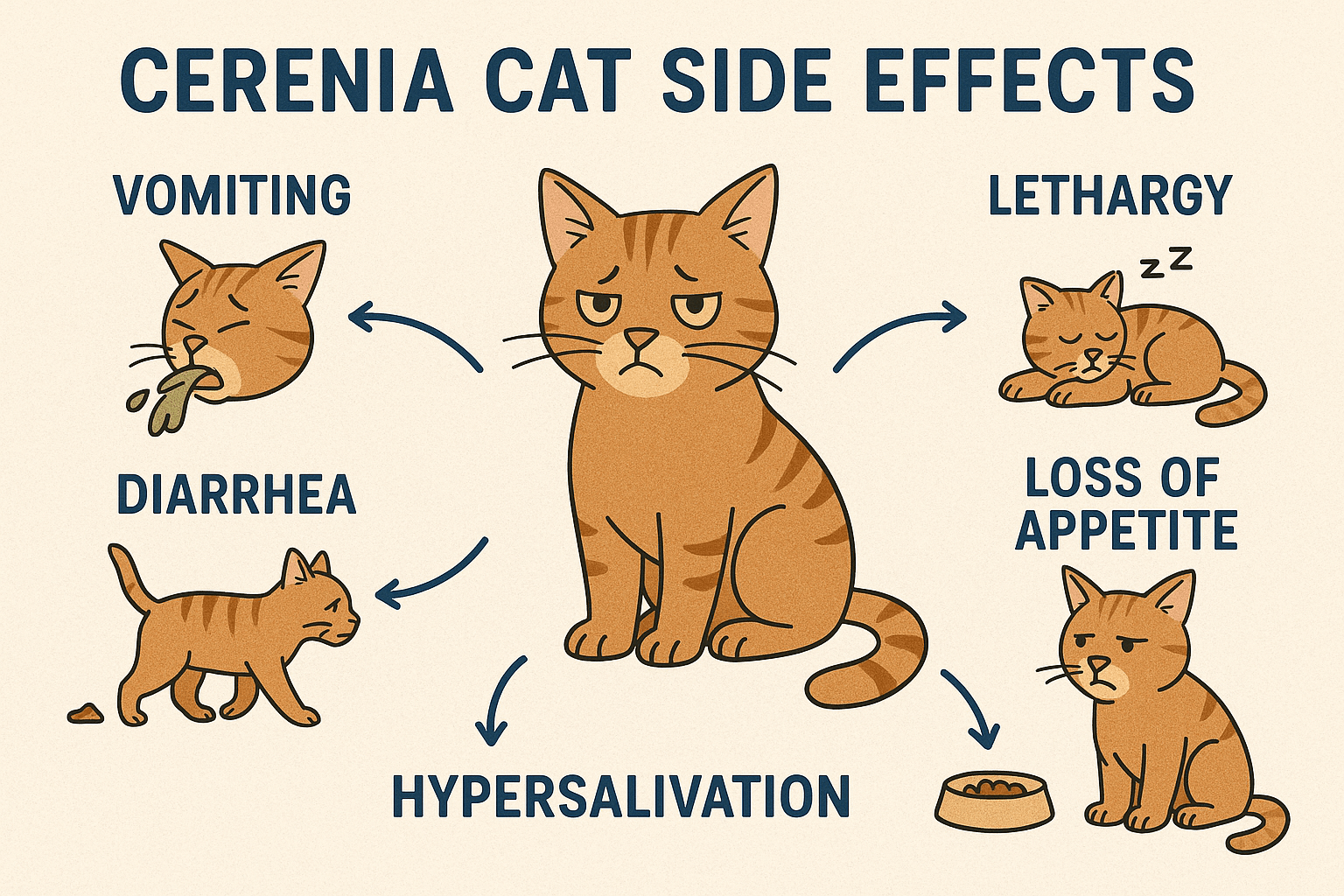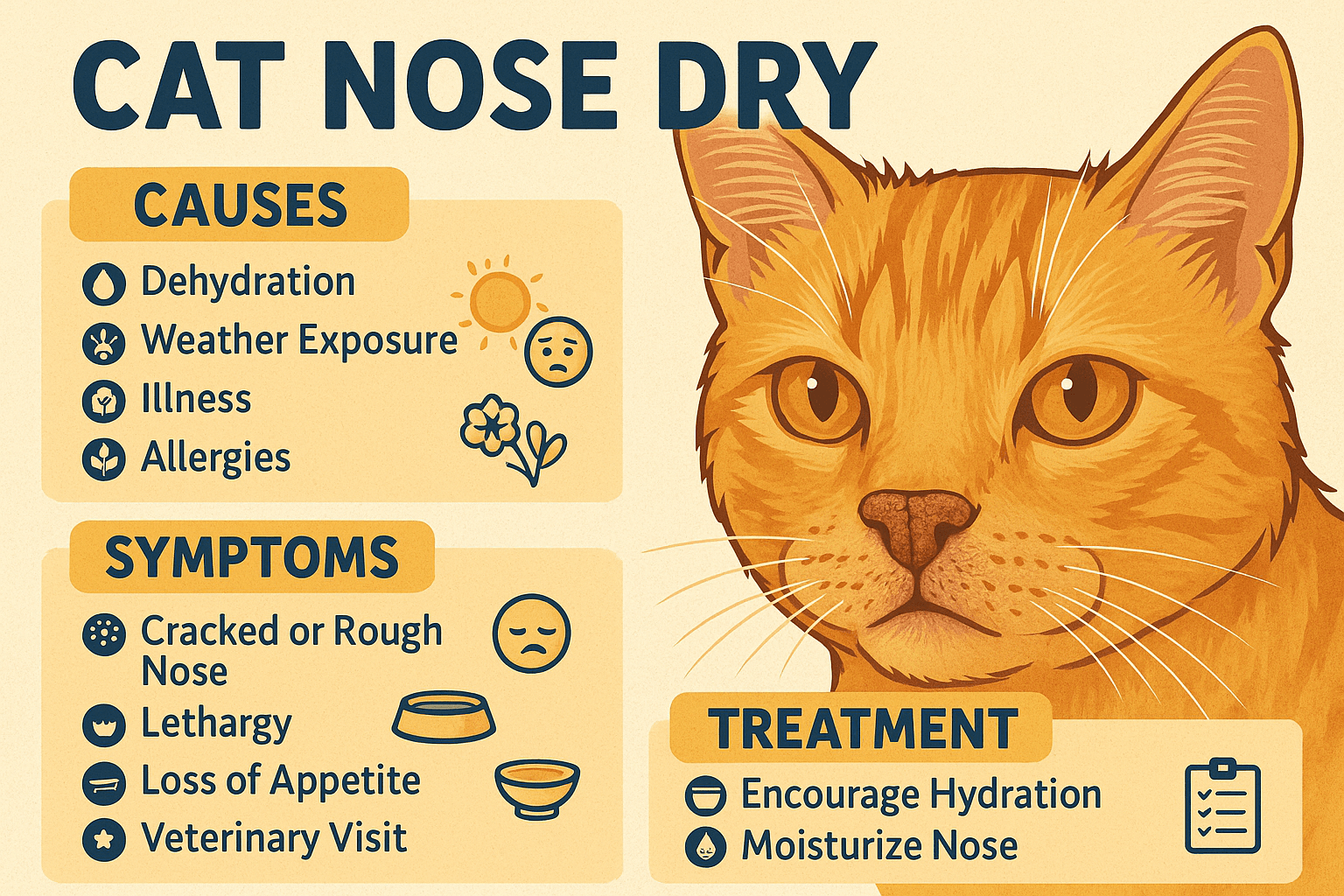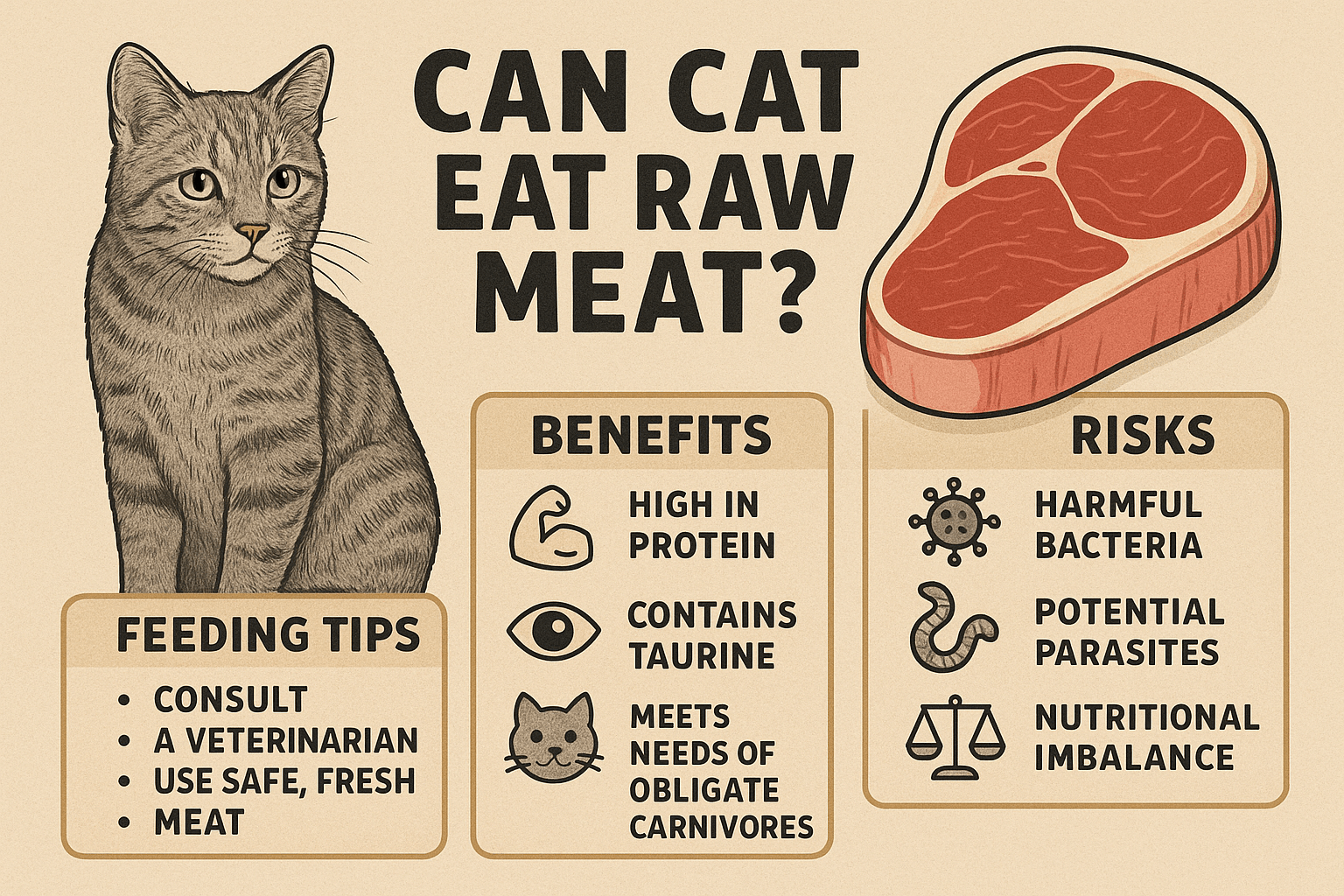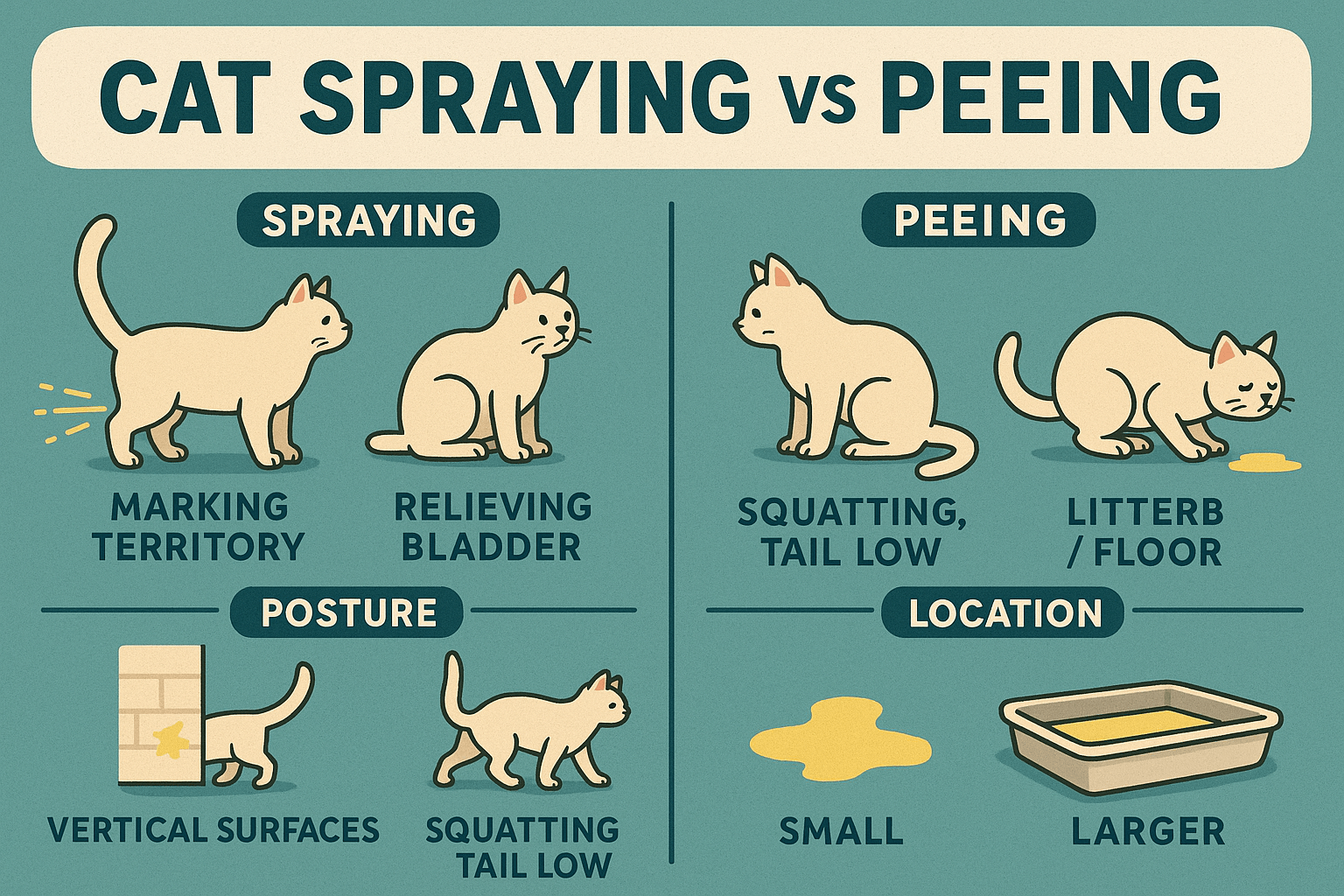Are Peace Lilies Toxic to Cats?
Peace lilies are a popular choice for indoor plants due to their elegant appearance and air-purifying qualities. However, if you’re a cat owner, it’s crucial to understand the potential risks these plants pose to your feline friend. While peace lilies are not as toxic as some other houseplants, they can still cause harm if ingested by curious cats. This blog post explores the dangers of peace lilies, how to identify symptoms of poisoning, and what steps to take if your cat comes into contact with this plant. By staying informed, you can create a safe environment for your pet while still enjoying the beauty of indoor greenery.
Why Are Peace Lilies Toxic to Cats?
Peace lilies contain insoluble calcium oxalate crystals, which can irritate a cat’s mouth and digestive system if chewed or ingested. Understanding the components of this toxicity helps explain why these plants are harmful to pets.
Insoluble Calcium Oxalate Crystals:
These needle-like crystals are found in all parts of the peace lily and cause irritation upon contact with sensitive tissues.Immediate Oral Irritation:
When a cat bites into the plant, the crystals embed themselves in the mouth, leading to pain and discomfort.Gastrointestinal Upset:
If swallowed, the crystals can irritate the stomach lining, resulting in vomiting or diarrhea.Respiratory Symptoms:
In rare cases, swelling of the throat may occur, making it difficult for the cat to breathe or swallow.Non-Fatal but Painful:
While peace lilies are not lethal like true lilies, they can still cause significant distress and require prompt attention.
Understanding these factors highlights the importance of keeping peace lilies out of reach of curious cats.
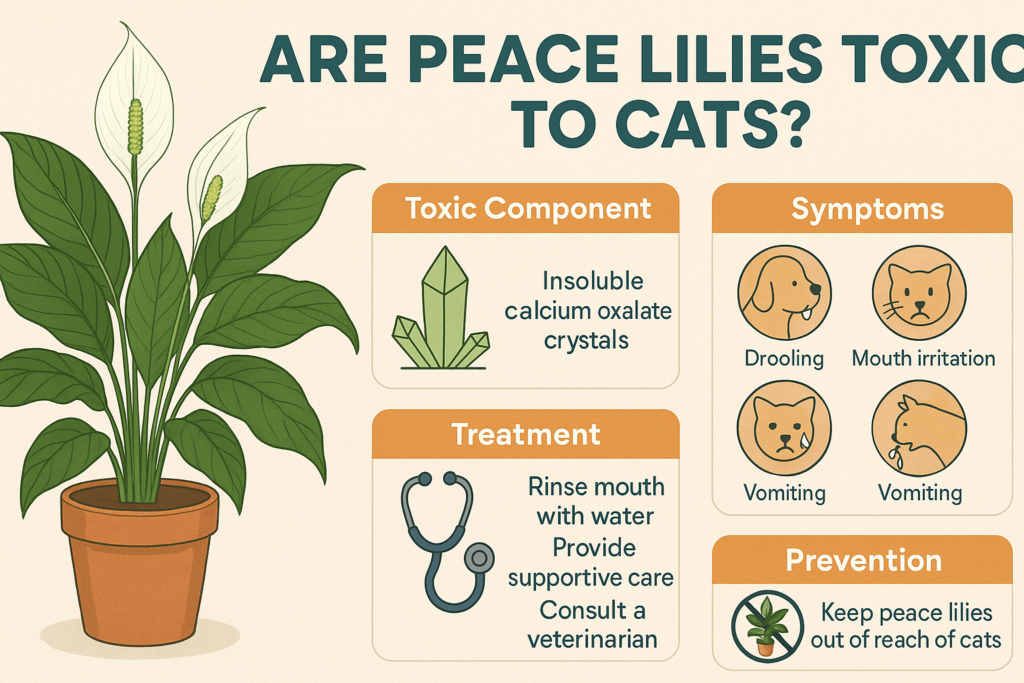
Symptoms of Peace Lily Poisoning in Cats
If your cat has come into contact with a peace lily, recognizing the signs of poisoning early can make a significant difference in their recovery. Look out for these common symptoms.
Excessive Drooling:
The irritation caused by calcium oxalate crystals often leads to increased salivation as the cat tries to soothe their mouth.Pawing at the Mouth:
Cats may repeatedly paw at their face in an attempt to alleviate the burning sensation caused by the crystals.Vomiting:
Gastrointestinal irritation can lead to episodes of vomiting shortly after ingestion.Difficulty Swallowing:
Swelling or pain in the throat may cause the cat to struggle with eating or drinking.Lethargy or Discomfort:
Affected cats may appear unusually tired or restless due to the discomfort caused by the toxins.
Identifying these symptoms quickly allows you to seek veterinary care and minimize the risk of complications.
Check this guide 👉Is Gladiolus Cat Safe? Best 7 Expert Tips!
Check this guide 👉Are Tulips Cat Safe? Best 7 Expert Tips!
Check this guide 👉Is Ranunculus Cat Safe? Best 7 Expert Tips!
Safe Alternatives to Peace Lilies | Plants Toxic to Cats (Avoid) |
|---|---|
Spider Plant | True Lilies (e.g., Easter Lily) |
Boston Fern | Aloe Vera |
African Violet | Pothos |
Parlor Palm | Philodendron |
Calathea | Daffodils |
Steps to Take if Your Cat Eats a Peace Lily
If you suspect your cat has ingested part of a peace lily, acting quickly is essential to ensure their safety. Follow these steps to address the situation effectively.
Remove the Plant Immediately:
Take the peace lily away from your cat to prevent further exposure to the toxic parts.Rinse Their Mouth:
Gently rinse your cat’s mouth with water to remove any remaining plant residue or crystals.Monitor for Symptoms:
Keep a close eye on your cat for signs of drooling, vomiting, or difficulty swallowing over the next few hours.Contact Your Veterinarian:
Call your vet for advice, even if symptoms seem mild. They may recommend bringing your cat in for evaluation.Avoid Home Remedies:
Do not attempt to induce vomiting or administer medications without professional guidance, as this could worsen the situation.
Taking these proactive measures ensures your cat receives the care they need while minimizing potential harm.
How to Prevent Peace Lily Poisoning in Cats
Prevention is key to protecting your cat from the dangers of toxic plants like peace lilies. Implementing these strategies can help keep your furry friend safe.
Place Plants Out of Reach:
Position peace lilies on high shelves or in rooms inaccessible to your cat to reduce temptation.Use Hanging Planters:
Hanging baskets keep plants elevated and away from curious paws and mouths.Supervise Playtime Near Plants:
Monitor your cat closely when they’re near houseplants to discourage nibbling.Choose Cat-Safe Plants:
Replace toxic plants with species that are non-toxic and safe for pets, such as spider plants or African violets.Educate Family Members:
Ensure everyone in your household understands the risks of peace lilies and knows how to respond if an incident occurs.
By taking these precautions, you can create a harmonious environment where both your plants and your cat thrive.
Common Misconceptions About Peace Lilies
Many myths surround peace lilies and their safety around pets. Clearing up these misconceptions ensures you make informed decisions about your home environment.
Myth: Peace Lilies Are Completely Safe for Pets:
While not as dangerous as true lilies, peace lilies still pose risks and should be treated with caution.Myth: Cats Won’t Be Attracted to Peace Lilies:
Curiosity often drives cats to investigate plants, regardless of their toxicity.Myth: Washing the Leaves Makes Them Safe:
Cleaning the leaves does not remove the calcium oxalate crystals embedded in the plant tissue.Myth: Only Large Quantities Are Harmful:
Even small amounts of peace lily can cause irritation and discomfort in cats.Myth: All Lilies Pose the Same Risk:
True lilies, such as Easter lilies, are far more toxic to cats than peace lilies.
Understanding these facts helps dispel confusion and promotes responsible pet ownership.
Non-Toxic Plants That Are Safe for Cats
If you’re looking to decorate your home with pet-friendly plants, consider these alternatives that won’t harm your feline friend.
Spider Plant:
Known for its air-purifying qualities, the spider plant is completely safe for cats and adds a touch of greenery.Boston Fern:
This lush, hanging plant thrives indoors and poses no threat to curious cats.African Violet:
With its vibrant blooms, the African violet is a colorful and non-toxic option for pet owners.Parlor Palm:
A low-maintenance plant that’s safe for cats and enhances any room’s aesthetic.Calathea:
Also known as the prayer plant, calathea is visually striking and entirely harmless to pets.
These options allow you to enjoy the beauty of plants without worrying about your cat’s safety.
How to Train Your Cat to Avoid Toxic Plants
Teaching your cat to stay away from toxic plants requires patience and consistency. Here are some effective training tips to help redirect their curiosity.
Use Bitter Spray on Plants:
Applying a pet-safe bitter spray to leaves discourages chewing by making them taste unpleasant.Provide Cat Grass:
Offer a tray of cat grass as a safe outlet for your cat’s natural urge to nibble on greens.Redirect Attention with Toys:
Engage your cat with interactive toys near plants to shift their focus away from the foliage.Reward Good Behavior:
Praise or treat your cat when they ignore plants to reinforce positive habits.Create Physical Barriers:
Use plant stands, enclosures, or barriers to block access to toxic plants until your cat learns to avoid them.
With time and effort, training can help protect your cat while preserving your love for indoor plants.
Frequently Asked Questions About Peace Lilies and Cats
Are all parts of the peace lily toxic to cats?
Yes, every part of the peace lily contains calcium oxalate crystals, which can irritate a cat’s mouth and digestive system.
Can peace lilies kill cats?
While peace lilies are not fatal, they can cause significant discomfort and should be treated seriously if ingested.
What should I do if my cat eats a peace lily leaf?
Remove the plant, rinse your cat’s mouth, monitor for symptoms, and contact your veterinarian for further guidance.
Are there any safe lilies for cats?
No true lilies are safe for cats; however, plants like calla lilies and peace lilies are less toxic than others but still pose risks.
How can I train my cat to avoid plants?
Use deterrent sprays, provide alternative toys or grasses, and reward your cat for ignoring plants to encourage good behavior.
Creating a Safe Space for Cats and Plants
While peace lilies are beautiful additions to any home, their potential toxicity to cats makes them a risky choice for pet owners. By understanding the risks, recognizing symptoms of poisoning, and taking preventive measures, you can enjoy indoor greenery without compromising your cat’s well-being. With thoughtful planning and a focus on safety, it’s possible to strike a balance between nurturing your love for plants and ensuring your feline companion stays happy and healthy. Remember, a little caution goes a long way in creating a harmonious home for both you and your pet.
Cerenia Cat Side Effects: Best 7 Expert Tips! Discover expert advice on managing Cerenia side effects, ensuring your cat’s safety, and promoting a smooth recovery with practical tips.
Why Is My Cats Nose Dry? Best 7 Expert Tips! Discover expert advice on causes of dry cat noses, signs of concern, and how to keep your feline healthy and comfortable.
Can Cats Eat Raw Meat? Best 7 Expert Tips! Discover the benefits, risks, and expert advice on feeding raw meat to cats safely and nutritiously.
Cat Spraying vs. Peeing: Best 7 Expert Tips! Learn to identify the differences, understand causes, and stop unwanted behaviors with proven strategies for a cleaner, stress-free home.

